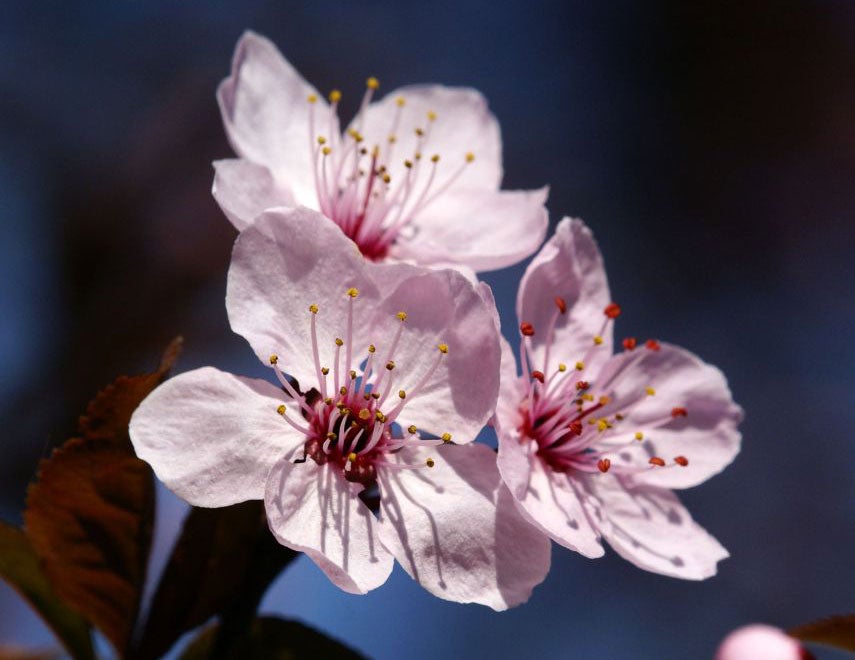Nature Studies: Spring is a time for celebration. And nothing captures the mood quite like blossom
We are at the start of what we might call the blossom calendar

It is a charming but largely unnoticed attribute of English that it has a specific word for the flowers of trees. I think “blossom” is one of the loveliest terms in the language, conveying something of the fact that what are merely called tree-flowers in many other tongues have a separate, special quality of their own.
Two sets of blossom in particular were standing out in last week’s wonderful weather, the first of them the cherry-plum, Prunus cerasifera, which flowers much earlier than, and is often confused with, the true cherry, Prunus avium. While the latter appears about the end of March, cherry-plums are among the first of our trees to flower and can be in bloom in early February, indeed in some of the exceptionally warm winters of the past 25 years they have even been in flower at the end of December; right now they are just past their peak.
There seem to be two principal cherry-plum variants, one with pink flowers and purplish leaves, and the other with white flowers and bright green leaves, and in each case the blossoms appear just before the leaves do, making for a spectacular show.
I was looking at them last week side by side on the Thames towpath between Kew and Richmond and I noticed that the pink variety darkens in its general effect as the purple leaves become more prominent and catch up with the flower petals, although it is initially a great blob of unadulterated pink brilliance.
The other tree whose blossoms have recently been brightening my part of the world is the magnolia; some of the individuals are dazzling, such as one in a front garden at the bottom of my road which looks like a colossal cream bouquet, something made up in a giant’s flower-shop.
Over the years I have noted how regular is their bud-burst, and Magnolia Opening Day has averaged 9 March; this year it was 8 March, a week last Saturday. That marks for me the real beginning of spring, even though the Met Office starts the season on 1 March, and the astronomical spring begins with the Vernal Equinox, which falls on 20 March, this coming Thursday.
Thus we are at the start of what we might call the blossom calendar: there’s a lot more to come. April is the key month, beginning with blackthorn, another species where the small white flowers appear before the leaves, giving the twigs the look of being sugar-coated, or covered in frost.
It’s followed by apple blossom, lilac blossom and the pure white blossom of the true cherry, all three of which we have, by a particular blessing, appearing simultaneously in our small suburban back garden; then there are the magnificent Roman candles of the horse chestnut trees planted in our streets; and in some places, the flowering creepers on house walls, the blue grape-bunches of wisteria and the waxy pale petals of clematis, as the blossom season reaches its peak. It winds down in May with the blossom of the hawthorn, sometimes named after the month itself; May blossom looks fatter and blowsier than blackthorn, cream to blackthorn’s sugar, but is still very lovely, especially when covering whole hawthorn hedges, streaming across the landscape.
The final item in my own blossom calendar appears in June: it’s that of the elder, the small tree which produces hanging inflorescences, or complex clusters, of tiny white blooms which are delicate and subtly fragrant (although the leaves, by surprising contrast, smell foul) and are used in making elderflower champagne and the increasingly popular soft drink, elderflower pressé.
I look forward to all of these tree-flowers and, for me, they all have a special excitement, which is why I like the fact that English has its own word for them. I think they’re special because they appear to be decorating their trees, suggesting that the world has something to celebrate – which, with the coming of spring, it certainly does.
Well done to everyone’s favourite small beetle
Something else we’ll soon be seeing as spring advances: ladybirds. Research published at the weekend suggests that everyone’s favourite small beetles are actually capable of extraordinary feats of flight, soaring to more than 3,000 ft and able to cover as much as 74 miles in a single hop. It just shows: don’t write anything off, especially, as the venerable American naturalist E O Wilson famously put it, “the little things that run the earth”.

Join our commenting forum
Join thought-provoking conversations, follow other Independent readers and see their replies